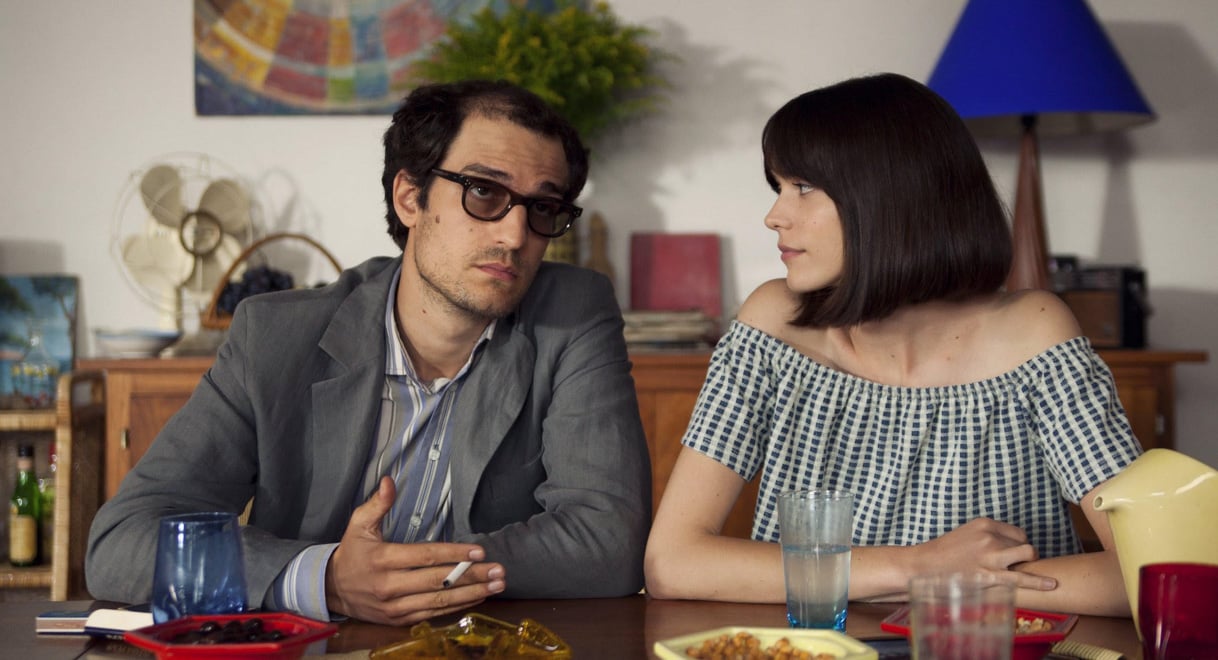Jean-Luc Godard, director of landmark films such as “Breathless,” “Contempt” and “Weekend,” was fascinated not only by the cinema, but also by politics. When university students organized massive protests in France in May 1968, Godard found himself caught up in the fervor. He denounced traditional modes of cinematic storytelling as bourgeois and ineffectual. He declared that he would make experimental works suffused with social commentary. As Godard made this artistic transition, his relationship with his second wife, the actress Anne Wiazemsky, was disintegrating.
This turbulent period in Godard’s life is the subject of Michel Hazanavicius’ new film “Godard Mon Amour.” The poster for the film features a quote from the real Godard — “this movie is a stupid, stupid idea.” There are reasons why the 87-year old filmmaker could take offense. Throughout the film, Godard is portrayed as a brusque, temperamental artist. Even those closest to him call him an “asshole.” Yet, even if the film’s depiction of Godard the man is not flattering, “Godard Mon Amour” is essentially a tribute to the director. Hazanavicius, the Oscar-winning director of “The Artist,” reinvents Godard’s anarchic aesthetic in conveying his story. Ultimately, “Godard Mon Amour” serves as an enjoyable exercise in style and raises some fascinating questions about filmmaking.
The film is replete with references to Godard’s films. It is ironic that the film is suffused with allusions to Godard’s work, since Godard was really the first major filmmaker to reference other movies in his works. Godard was a critic and a student of cinematic history, and he was influenced by filmmakers who worked in a plethora of genres. Therefore, he could pay homage to film noir director Samuel Fuller and art house filmmaker Ingmar Bergman in the same sequence.
Still, Godard’s homages were never just dull evocations of earlier works. Instead, he took ideas from directors like Fuller and Bergman and incorporated them into his aesthetic. Similarly, Hazanavicius is not content to simply copy sequences from Godard’s films. He creates some superb scenes that have no clear analog in Godard’s work.
For example, early in the film, Godard and Anne make love. While most of the film is in color, in this scene, Hazanavicius works in luminous black-and-white. This monochrome aesthetic calls to mind Godard’s early 1960s collaborations with cinematographer Raoul Coutard. In “Contempt,” Godard panned across Brigette Bardot’s nude body, and Hazanavicius shows Anne’s figure in a similarly sensual manner. One shot seems to be borrowed from Godard’s 1964 film, “A Married Woman.” Hazanavicius integrates all these allusions into a remarkably cohesive sequence that evokes Godard but does not ape him.
Hazanavicius not only employs some of Godard’s cinematic techniques, but he also focuses on some of the same themes that animate Godard’s work — the difficulty of preserving relationships in the modern era, the capabilities and constraints of the cinema and the delicate balance between the political and the personal. Yet, Hazanavicius does not treat these concepts as subtly or as profoundly as Godard. At one point in the film, Godard and Anne go to the movies and watch Carl Theodor Dreyer’s “The Passion of Joan of Arc,” just like Nana, the protagonist of Godard’s “Vivre Sa Vie.” Nana is an aspiring actress who becomes a prostitute. As she watches Joan of Arc suffer on screen, she sobs. Godard suggests that to condemn Nana for leading a dissolute life would be akin to burning a saint at the stake. When Godard and Anna watch “The Passion of Joan of Arc” in Hazanavicius’ film, there is no such subtext. Two people in love are simply spending time in the cinema.
Hazanavicius’ intent, however, is not to make a movie as complex as Godard’s. When I spoke to him about film, he noted that his aim was to direct an “entertaining film” that would make use of Godard’s aesthetic. In this, he certainly succeeds. He assembles a captivating cast. Louis Garrel and Stacy Martin deliver strong performances as Godard and Anne. They bring out their characters’ vulnerabilities and create a compelling portrait of a couple in crisis.
Furthermore, the film raises questions that seem particularly relevant. Throughout the film, Godard debates how to combine his art and his leftist views. Today, many artists, particularly those on the left, are trying to use their talents to make political statements. Godard is a brilliant artist, but he can be abusive toward Anne. In recent months, many critics have discussed the difficulty of separating an artist’s personal life and his oeuvre. By exposing Godard’s flaws, Hazanavicius explores this fraught topic.
Indeed, in “Godard Mon Amour,” Hazanavicius elucidates why Godard’s early works matter and why this particular period in his career is still worth studying. “Godard Mon Amour” may not be as deep as Godard’s own works, but when the film ended, I was inspired to return to Godard’s oeuvre. Just as Hazanavicius’ earlier work “The Artist” spurred a revival of interest in the silent film, perhaps “Godard Mon Amour” will convince viewers to explore the works of this influential auteur. If Hazanavicius can bring new viewers to Godard’s work, his film will be anything but a stupid, stupid idea.
Contact Amir Abou-Jaoude at amir2 ‘at’ stanford.edu.
